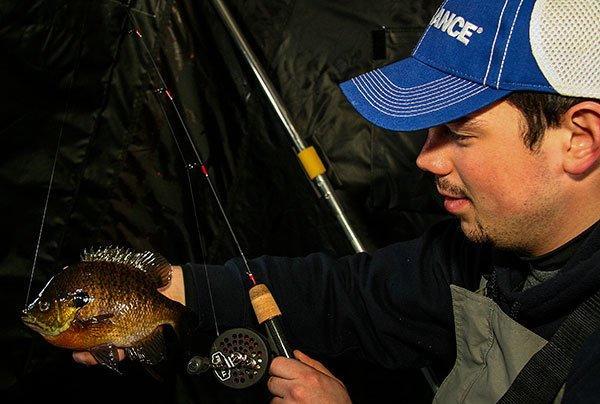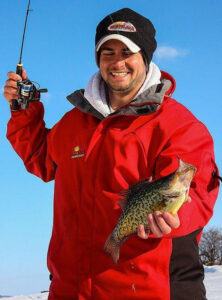I love open water, and I will fish it until my baits bounce off the skim ice.
But once it gets cold enough to walk on water “¦ it’s time to find where to ice fish on my favorite lakes.
Search for early ice spots
Ice is thick in the Northwoods, but this is still “tweener” time in much of the Midwest””the days-to-weeks transition period between open water and solid freeze.
But, if you are determined to make this off-season more productive, you are using this “change” period for preparation and mapping local lakes and doing so with a patience you couldn’t contrive during the run-and-gun days of summer.
The famous fishing twins, Scott and Marty Glorvigen, have fished countless small lakes near their homes in Grand Rapids, Minn.
“Some of the best and most underfished bodies of water are the small lakes you drive past on your way to the big-name waters,” said Scott Glorvigen, co-host of Wired2Fish TV on NBC Sports and a long-time star on the Professional Walleye Trail and FLW Walleye Tour. “The tendency in life is to think bigger is better, but so many small lakes offer easy entry in winter and are fun to fish.”
Small waters are usually the first to freeze in any area. Prepare for the ice fishing season by scouting them for prime areas before the freeze, if possible. Open water homework during late autumn can multiply your catch rate come ice time. If your lakes are already frozen, you can reduce your learning curve to a fraction of the norm by concentrating on a smaller, more manageable lake.
“On a lot of small bodies of water, scouting lakes is as simple as finding the deepest portions that will be the gathering areas for panfish like crappie and bluegill,” Glorvigen said.
Find the hole in one
Falling water temperatures find fish metabolism slowing down and so should you.
Winter is prime time to really learn lakes beyond identifying typical structural elements. Dig for details! Take time to find out precisely what features make those areas attractive to fish.
Key areas – for panfish in particular – are the “soft spots,” areas where hard bottom shifts to soft sediment.
“Those hole areas are surrounded by shallow areas,” Scott explains. “Those areas collect sediment almost like dust collects in the corners of our house or garage.”
The depth of such holes will vary. On northern lakes, they are often at 14- to 18-foot depths or even 25 feet deep. But they can be much shallower and more subtle depressions on many waters.
Winter fishing underscores the value of areas we tend to dismiss as “mud holes” or “mud flats.”
“That’s where the zooplankton and insects gather,” said Glrovigen. “They anchor the food chain. Consequently, that’s where the bluegills and other species congregate.”
Mike Pehanich is publisher of Mike Pehanich’s Small Waters Fishing website (smallwatersfishing.com) featuring videos and features with top pros of the bass world and multi-species angling tips.













